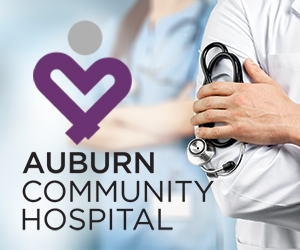
One of the opportunities in this phase of my life is devoting time to community organizations. I am currently Chair of the Board of View, an arts organization in Old Forge (viewarts.org).
As we headed into the Covid-19 pandemic, it seemed at first that our role would be limited. We soon learned differently. View pivoted to online offerings during the first year and slowly moved to in-person and online classes, exhibitions and performances.
Writing, yoga, drawing, music, pottery — all forms of art — drew people in. View realized quite quickly that we offered something that people needed during this time. Creativity was tied to mental health in a way we had not appreciated (or anticipated).
As clinicians increasingly discover and acknowledge the connection between mind and body, it makes sense to encourage patients to find creative outlets in their healing processes. Nationally, we see healthcare centers addressing these connections in the treatment of cancer, heart conditions, pain, and chronic illness.

Kathryn Ruscitto, Adviso
At the Benson-Henry Institute (BHI) at Massachusetts General Hospital, there is a deep history of examining the mind-body connection. They found that meditation has a positive impact on metabolism, breathing, heart rate and brain activity. Dr. Herbert Benson labeled these changes the “relaxation response.” The relaxation response is the foundation of Mind Body Medicine at BHI.
At Stony Brook, the Mind-Body Clinical Research Center actively addresses the connection between mental health, physical health and overall wellness. Their philosophy is that “Mind-body medicine is built on the foundation that thoughts, behaviors, emotions, biology and environmental influences can interact to positively or negatively affect one’s mental and physical health.”
At SUNY Upstate Medical University, integrative family physician Kaushal Nanavati, MD, leads the effort to incorporate meditation, yoga and relaxation into health care.
Spiritual care and prayer are also essential parts of the mind-body connection as reflected at St. Joseph’s Health, Crouse Health and Upstate Medical University.
Clinicians are no different than the patients they treat. There are many great examples of clinicians who engage in music, painting, jogging and cycling, making them perfect examples of the mind-body connection.
Covid-19 has challenged us in many ways, but it has also accelerated our learning about how closely connected our physical health and mental health are.
How does your practice integrate opportunities for employees and patients to make these mind-body connections?
Kathryn Ruscitto, Advisor, can be reached at linkedin.com/in/kathrynruscitto or at krusct@gmail.com.
Resources for Clinicians
- bensonhenryinstitute.org/mission-history/
- mindbody.hmscme.com/
- johnshopkinssolutions.com/solutions/
- web.noom.com
- curablehealth.com
- positivepsychology.com/body-mind-integration-attention-training/
- ncbi.nlm.nih.gov/pmc/articles/PMC6194914/
- neuro.stonybrookmedicine.edu/centers/mind-body
- upstate.edu/fmed/healthcare/integrative.php





